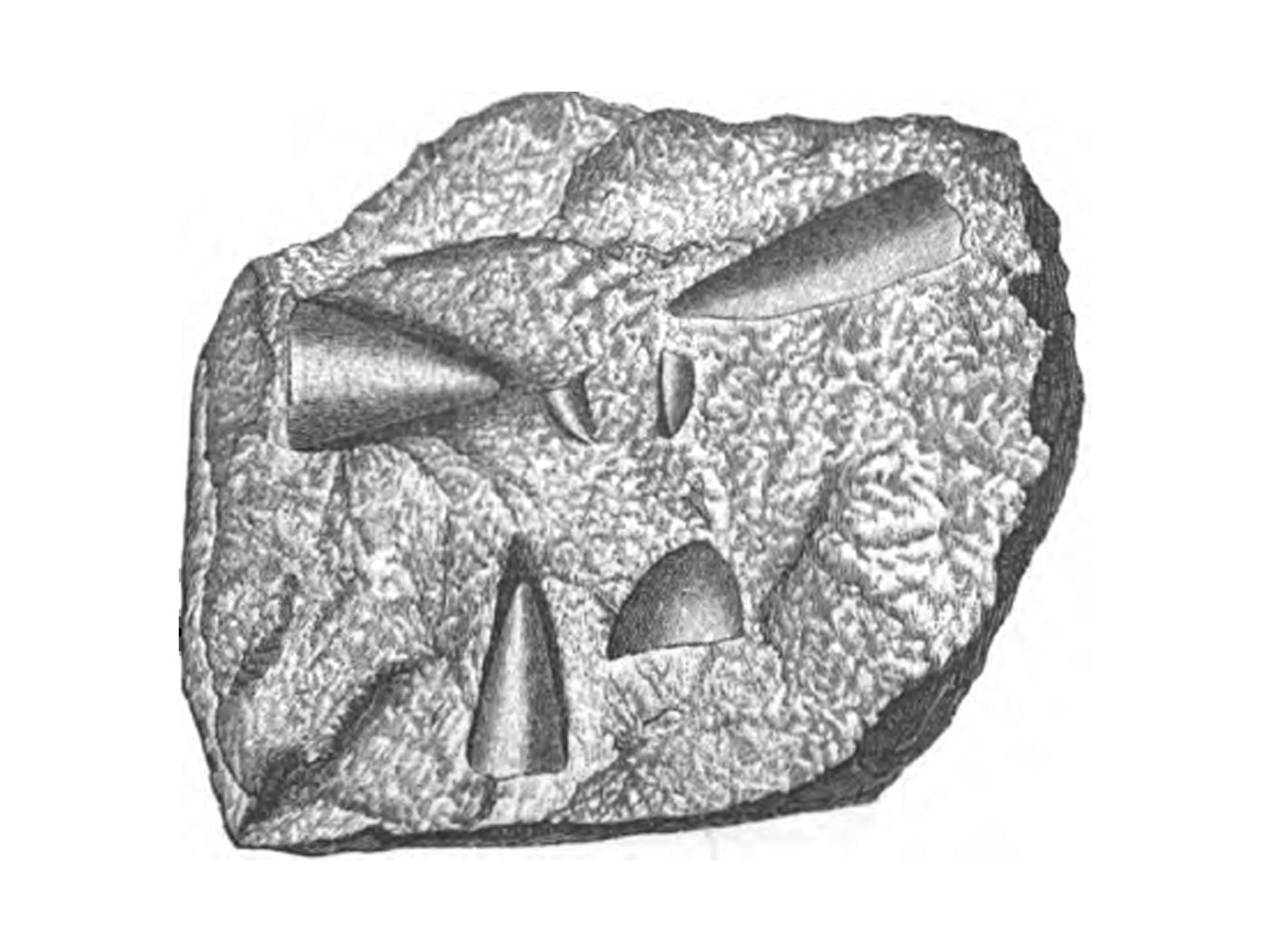What happens when a soil fungus runs into a hard mineral containing precious trace amounts of nutritious iron? A poorly designed fungus might go hungry and languish like a forlorn noodle, but researchers recently found ways that a soil fungus conducts a miniature mining operation. The details reveal a well-designed suite of fungal features that need a reasonable explanation.
Chinese investigators experimented on the soil fungus Talaromyces flavus that came from a serpentinite mine in Donghai, China. They used various techniques to assess exactly what goes on when the feeding fungus touches a green mineral called lizardite—a unique mineral found in serpentinite rocks. The researchers published their finds in the journal Geology.1
First, the fungus extends thin filaments called hyphae that probe its surroundings. When it contacts a suitable rock, the hyphae deploy an acid that immediately degrades the mineral surface, which releases trace amounts of iron. This first step implies that the fungus uses a sensitive and accurate miniaturized iron-detection mechanism. It also means that the lowly fungus communicates iron discoveries to its own innards; in response, it activates specific acid production and export routines.
But if acid etching was all the soil microbe could do—amazing though it is—then what would keep the released iron from just dribbling away? In apparent anticipation of this problem, T. flavus manufactures and exports unique iron-trapping chemicals called siderophores. These keep iron atoms near so the microbe can recover them essentially one atom at a time.
At this point, the mining fungus encounters another obstacle. The same acid it used to extract iron from the mineral's surface also reacts with silicon and oxygen to form a gel-like silica layer that prevents further chemical extraction. Not to be outdone, the fungus begins physically mining the mineral.
The Geology study authors calculated that fungal hyphae can generate two orders of magnitude more force than the chemical bond forces that hold the iron-bearing mineral lizardite together.2 By penetrating the silica gel to access and pry apart hard layers, fungal hyphae rapidly expose new iron sources.
Acids extract iron. Siderophores capture iron. Hyphae break new ground. And the cycle continues. Human mining engineers use similar highly regulated steps for in situ leaching operations that recover metals from ore. But how did the fungus get so smart?
It looks as though somebody knew that iron plays vital roles in fungal cell growth. They also knew that fungi can't run around and capture or consume iron sources, and therefore equipped them with every tool necessary to mine iron right out of rocks.
The Geology study authors wrote, "The stronger siderophore production detected in Exp-mixP [fungus-mineral interface], together with the unaffected Fe [iron] distribution below the culture-mineral interface, thus strongly suggest that the cell-promoted dissolution of lizardite (containing ~4.6% Fe2O3) is intended for Fe extraction."
And of course, there's no such thing as intent without intelligence and will.
In his Science News review of this study, science writer Eric Hand wrote, "Step by step, the fungus Talaromyces flavus knows how to get what it wants."3 Yes, it does. And since it has no ability to learn on its own, someone must have programmed that "know how" into it.
Geochemist and senior author Henry Tang told Science News, "These organisms, they don't have a brain, but they're pretty smart." Smart indeed. Mineral mining fungi appear to have borrowed a bit of genius from their all-wise Creator.
References
- Li, Z. et al. 2016. Cellular dissolution at hypha- and spore-mineral interfaces revealing unrecognized mechanisms and scales of fungal weathering. Geology. 44 (4): 319-322.
- According to the Geology report, the turgor pressure exerted by a 1 X 10 nm hyphal peg is on the order of 10-16 J, whereas the Mg-O bond energy is about 10-18 J.
- Hand, E. Iron-eating fungus disintegrates rocks with acid and cellular knives. Science News. Posted on sciencemag.org March 14, 2016, accessed April 6, 2016.
*Mr. Thomas is Science Writer at the Institute for Creation Research.
Article posted on April 21, 2016.













